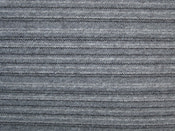
Blacks/Greys
More Info / Free Sample
MORE DETAILS
Blacks/Greys
More Info / Free Sample
MORE DETAILS
Blues
More Info / Free Sample
MORE DETAILS
Naturals/Browns
More Info / Free Sample
MORE DETAILS
Reds
More Info / Free Sample
MORE DETAILS
Greens
More Info / Free Sample
MORE DETAILS
Multis/Others
More Info / Free Sample
Here's a very special £2.25 offer!
At only £2.25 this stock range, brand new carpet tile is amazing value. It's a heavier pile weight than most entry-level carpet tiles and comes with a 5-year manufacturer's guarantee.
The range also comes with a contrasting stripe tile if you fancy mixing them up a bit. We're selling thousands of them because they're such cheap carpet tiles!
Just click the link here or on the image of the tile to have a look. And of course, don't just take our word for it, we'll happily send you a free sample so you can see it for yourself.
Or if you want to see all the other tiles we have for sale, just click carpet tiles
There are a couple of sections below about using our handy tile calculator so you can work out how many tiles you'll need or your job and there are fitting guides to help you get a professional finish.
We've also included information on how to tell the difference between a cheaply-made tile and a cheaply-priced tile, so you don't waste your money.
But of course, if you have any questions at all, just give us a call or drop us a quick email at ash@carpettilewholesale.co.uk and we'll be very happy to help.
Laying carpet tiles is easy if you follow these six simple steps:
Prepare the sub-floor
The sub-floor should be clean, level, smooth, solid, sound and dry.
Mark out the area
Find the centre of the area and mark a cross with a chalk line.
Loose lay
Loose lay a row of tiles along the chalk line and then out to the sides of the area. Adjust the tiles to avoid small cuts at the edges or in doorways.
Stick down
Stick down the carpet tiles in the centre using spray adhesive. If you spray the back of the tile as well as the floor, the tiles will be very difficult to lift again, so just spray the tile or the floor, not both.
In Small Areas – Just spray every third or fifth row to save money.
In Larger Areas – Use liquid tackifier (which we sell in 5 litre and 10 litre tubs) applied with a foam roller on a pole. Always allow 30 minutes for it to dry to a clear, tacky film. If you don’t, the tiles will be almost impossible to lift in the future.
The edges
To make sure your edge cuts fit properly, butt a tile up firmly to the edge of your area and cut through the tile that’s underneath it.
How do I start laying carpet tiles?
Before you begin laying your carpet tiles, you should keep a few basic tips in mind to ensure that your finished job looks great.
First thing to do is prepare the sub-floor by making sure that it is flat, level and dry. Carpet tiles allow the floor to breathe but a very damp concrete floor may require a damp proof membrane.
Smooth any imperfections using rapid repair mortar or screed.
Overboard older and uneven wood sub floors with 4mm or 6mm ply.
Start laying out your tiles from the centre of the room. Loose lay a row of tiles along a chalk line and then work outwards to the walls of the room, forming a cross lengthways and widthways.
Adjust the starting position as necessary to avoid very thin cuts at the edges. It’s best to fit full tiles in doorways wherever possible.
Once you’re happy lift the centre tile in the cross, apply adhesive and re-lay. Then complete the cross before filling in the corners. Finally, make the perimeter cuts.
Laying the tiles is relatively easy and they won't all need adhesive to secure them to the floor. Often just sticking down the tiles in the doorways and around the perimeter is enough or glue every third or fifth row for additional security.
On large areas it’s easiest to glue the whole floor with liquid tackifier, simply pour some out and spread with a foam paint roller on a brush handle. Allow to cure for 20 minutes or until the adhesive goes from white to clear, then lay your tiles.
To make sure the edge cuts fit properly, butt a full tile up to the edge of your area and cut through the tile that’s underneath it. Lift up both tiles and swap them round so the cut tile is against the wall and the full tile is in the gap.
It’s easy once you get the hang of it but if you need any help or advice, just give ring us on 0115 940 4454 or send a quick email sales@carpettilewholesale.co.uk and we'll get back to you.
To create a great looking job you'll need to make sure that as you lay your tiles they stay closely butted up against each other. You should periodically check as you go along that any tiles already laid are still securely in place. If they have slipped or are not butted up against each other, you should adjust them before you lay any more tiles.
When you're ready to start cutting the perimeter tiles, it is best to cut tiles face down through the backing, marking your measurements on the back of the tile as a guide. Cut onto something with a little 'give' - such as a peice of cardboard or soft wood - to save blunting your cutting blade . And it's always best (and safest) to make a few cuts into the tile along your marked lines rather than trying to cut right through the whole tile with one swipe.
If you find that you need more help/advice with fitting your carpet tiles, why not have a quick look at our handy Fitting Guide which includes lots of top tips, but if you find yourself still struggling, just give us a ring on 0115 940 4454 - or send a quick email to us at sales@carpettilewholesale.co.uk and we'll be happy to help.
What are the best installation tips?
Here are some professional tips to help you get professional results from your next installation:
Test the Temperature Do not install carpet tiles in conditions where the floor's substrate temperature is less than 10 and more than 32 degrees celsius. Put simply, avoid laying tiles when it’s freezing cold or when it’s too hot.
Determine the Dry Time
This is how long adhesive will work with a newly laid tile before it loses its adhesiveness. The dry time for the floor can depend on factors like temperature, humidity and the porosity of the floor.
Applying the Adhesive
Hold your trowel at a 45 degree angle to make it easier to spread the adhesive evenly.
If you want more information you can always get in touch. Just call us (0115 940 4454) or send a quick email sales@carpettilewholesale.co.uk
And of course, there's lots more handy tips in our handy printable pdf Fitting Guide.
When trimming a carpet tile you'll need a sharp Stanley knife and a surface to cut on, preferably some cardboard or a piece of soft wood, so you don't blunt your knife. You will also need a straight metal edge.
Carpet tiles have an arrow on the back to make sure you get the correct alignment so make sure the pile runs in the direction you want before you cut any of your tiles.
Mark your cutting line on the tile where it is to be trimmed and always cut it from the back. This gives a much cleaner cut than cutting from the top of the tile. Now cut your tile using the metal edge to guide the blade. It is best to cut your tile with a few strokes rather than try to cut all the way through with one cut.
And it's always best to check your cuts before you use any adhesive or apply any tape.
If you want to ask anything not covered here - just give us a quick ring on 0115 940 4454 and speak to Ash for friendly and professional advice.
How many carpet tiles do I need?
Most carpet tiles are packed by the manufacturers in boxes of 20 and most measure 50cm x 50cm each. We sell all our tiles by the box and remember that if you order 200 or more tiles, you'll get FREE NEXT DAY DELIVERY!
All our carpet tiles are supplied on an on-going basis, meaning you can re-order tiles as when they’re needed.
Make sure you measure your room accurately and to double-check your maths you can put your room dimensions into our handy carpet tile calculator. We’ve already added 10% extra to allow for cuts and waste so you'll have enough tiles for your job.
We’ll happily chat to you about your measurements and quantities if you’re not sure, just get in touch. We’re only a phone call (0115 940 4454) or email away sales@carpettilewholesale.co.uk
Are carpet tiles good for a kitchen?
Carpet tiles in kitchens are very popular indeed. They provide a warm, non-slip surface and help reduce noise and breakages. China and glass break less easily when dropped onto a carpet tiled floor than if dropped onto vinyl or ceramic tiles and in multi tenanted buildings, the noise reduction properties of carpet tiles are hugely beneficial.
It is best to choose a carpet tile for your kitchen that is water and stain resistant to avoid any problems with mildew and water damage especially around the sink and cooking areas or in utility rooms. Our Stepping Stones range is especially suitable.
If you are intending to lay your tiles over an existing vinyl surface, use a recommended cleaning agent to clean the sub floor well before you start to lay.
Then choose a suitable tackifier or adhesive to make sure the tiles stay securely on the floor once they’ve been fitted.
On the other hand, if you intend to remove the existing flooring, you will need to create a level sub floor before you can lay the new carpet tiles. Treating rough underlying concrete with a levelling compound of a few millimetres is an easy process with the right product, but you must allow enough time for the compound to dry thoroughly.
Once the sub floor is prepared properly though, laying the tiles in your kitchen is just as simple as in any other area. So good luck and let us know if we can help in any way.
Are carpet tiles good in a bathroom?
An attraction of carpeted bathrooms is that they feel warm in colder weather. However, as co-ordinated as they may be to a colour scheme, they can also cause some work and worry. Moisture for example, can wreak havoc on your bathroom carpet and cause mildew and rot and deteriorate quickly. Whether you decide to clean the carpet or replace it entirely, both options can be inconvenient and costly.
Potential home buyers often think that carpeted bathrooms look dated and unappealing. Generally, homeowners prefer their bathrooms to be fitted with linoleum, ceramics or other materials that hold up well against water and moisture. They like to be able to use household cleaning products to keep their bathroom floor clean and would rather walk on a cold floor that’s been thoroughly cleaned rather than a carpeted floor that can't been cleaned so easily.
A great compromise to the bathroom flooring dilemma is to choose carpet tiles and all our tiles are ideal and economically priced for domestic use. Carpeting with tiles is affordable and available in a wide variety of water-resistant materials and colours and the better quality ones can be cleaned with a mild bleach solution. They are also easy to install and simple to replace if they become damaged or suffer because of leaks or moisture.
You can replace any tiles adversely affected by simply taking them up and replacing them with new ones. So there is no need for a whole new carpet and no need to hire a carpet fitter or steam cleaner, which is why bathroom carpet tiles are such a popular choice.
Carpet tiles are a cheaper flooring option than carpet. The four main reasons for this are:
Do you need underlay for carpet tiles?
You don’t need underlay for carpet tiles.
Carpet tiles come with a backing already bonded to the tile so there’s no need for a separate underlay, saving you time and money.
You do need to make sure that your floor is level and sound though.
By giving it a quick clean and checking it to make sure there are no ridges or loose bits, you should be good to go.
If your sub-floor is concrete and needs some attention to get it flat and solid, it will need patching up or levelling with some levelling compound. An uneven wood floor will need boarding with 4mm or 6mm ply.
We sell levelling compound, repair mortar and ply, which can order with your tiles.
If you want to pick our brains about which product to use, just get in touch. We’re always happy to help.
Carpet tiles are good for three main reasons.
Firstly, they are so easy and cheap to lay because they don’t require underlay and can be laid straight on to any sound, existing sub-floor.
Secondly, they minimise waste compared to sheet carpet especially in an odd-shaped room or one slightly wider than a standard roll width and minimising waste means big cost savings too.
Thirdly, tiles are easily swapped round or replaced if an area becomes badly worn or marked. Only the affected tiles need changing, whereas one small stain could ruin an entire carpet. Carpet tiles come in such a wide variety of styles, colours and textures that it’s easy to find just the right ‘look’. Whether you want something soft and luxurious for your bedroom, something serviceable but warm on your feet for your kitchen or you’re looking for something very hard-wearing for your office, carpet tiles will fit any space and make it look great. And free samples are easy to send in the post, so order a few and see what takes your fancy.
Carpet tiles come in all styles and types and choosing the best carpet tile depends where you want to lay your tiles and what sort of space it is.
You would be best to choose a heavy duty (heavy contract) nylon tile if you have commercial premises or an office to make sure that your new tiles can withstand the heavier footfall and still look good.
Whereas if you want carpet tiles for your home, the look and feel of the tile will be the most important thing. Choosing tiles with a nylon cut pile would mean they were comfy and soft to walk on but would be cleanable and look good for years.
Price isn’t always a good indicator of which carpet tiles are best because there are always top-quality tiles on offer. So before you buy a tile, a good question to ask is whether it’s a cheaply-made carpet tile or a well-made carpet tile on offer at a cheap price. The latter is the one to go for every time.
If you need any help choosing or you want to ask whether the tile you’ve picked is going to do the job for you, just get in touch. We’ll happily share our knowledge with you.
Yes, you can vacuum your carpet tiles! In fact, regular vacuuming will make your carpet tiles look better and last longer as grit and dirt that’s left on the tiles will actually damage the fibre structure.
If dirt particles are left to build up they are much harder to remove, reducing the life of your carpet tiles.
So, a regular ‘nip round with the vac’ will do wonders for your how your carpet tiles look and for how long they’ll last.
And if you don’t have time to do the whole floor area, just do the places that get the most use and do the rest when you can.
Can you install carpet tiles over a tile floor?
Before you start to install carpet or carpet tiles over a tiled floor, you will need to make sure that the tiled floor is smooth, solid, sound and level. In other words, the floor needs to be clean, level and flat, not breaking up in places and not ‘bouncy’ or moving.
Remember that any imperfections on your tiled floor may show through when you lay your carpet tiles.
Carpet tiles are easy to lay directly on to the tiled floor and will conceal the grout lines providing that they are almost flush with the tiles. If the grout lines are deep, or any tiles are breaking up, a screed or repair mortar will soon put it right. You can easily pick up a bag of screed or repair mortar from your local DIY outlet, the instructions will come with it..
Just give us a quick ring and we’ll happily answer all your questions and make sure you buy the right products.
How do you calculate carpet tiles for a room?
Calculating how many carpet tiles you need for a room is simple. Grab a pen, paper and a metal tape measure.
Measure the room across the width and then its length and make a note of these dimensions.
If your room is an odd shape, draw out a rough diagram and divide it into regular shapes.Then measure these shapes separately and add them together.
Here’s a link to our tile calculator which will tell you how many tiles to order. Tile Calculator. The calculator adds 10% to allow for waste and trimming so you don’t need to add extra tiles for this. But sometimes it’s best to err on the side of a few extra tiles as there’s nothing worse than running out of tiles before you’ve finished the job.
So if you’ve not laid carpet tiles before, add a few extra but give us a ring on 0115 940 4454 and speak to one of us if you need any more help working out how many carpet tiles you need and we’ll be pleased to check your maths!
Do you have to glue down carpet tiles?
Often the advice is that you don’t have to glue down your carpet tiles and this is fine if your area is small. We think it’s much better to glue down the tiles, especially in doorways and around the perimeter.
You can reduce the amount of adhesive required by spraying every third or fifth row. This will keep the carpet tiles in place. If you’re working in a larger area, a liquid tackifier is quick and easy to use. Simply pour some out and spread it using a foam roller on a broom handle, allow to cure for 20 minutes before laying the tiles.
Adhesive is cheap to buy and easy to use, but do remember to only use it on the floor OR on the carpet tiles. Glueing both will create a permanent bond making the tiles very difficult to remove in future. By just glueing the floor or the tile you’ll be able to lift any damaged or marked tiles easily and move them around or replace them if you ever need to in the future.
Whether or not you use glue depends on the type of job and surface you are dealing with. A very flat, stable surface with little footfall would not need to be stuck down, but glue would be needed for a busy commercial area.
If you’re not sure which glue or how much you’ll need – just get in touch and we’ll be happy to help.

Tile Calculator
Calculate tiles
Get Free Samples
See how
Delivery Rates
Click to look
Need Any Help?
Contact usWe use cookies to enhance you experience. Click to view our Cookie Policy or Manage Cookies or Accept All Cookies
